Can you tell me what “Fujisan” is? It is the alternative name for Mt. Fuji. For centuries, it has inspired poets, painters, monks, and now millions of tourists with cameras in hand.
As we have read in our General Knowledge books, Mt. Fuji, standing tall at 3,776 metres, is the highest peak in Japan. It is also the most photographed one.
Mount Fuji represents strength and calmness and showcases the beautiful balance of nature and culture in Japan.
You can choose to climb it, admire it from a distance, or relax in a hot spring while looking at it. Fuji makes you feel small, but it also inspires awe.
So, if the question asks, Why visit Mount Fuji? Here’s your answer-
Mount Fuji is worth visiting for its surreal views, cultural significance, hiking trails, and nearby attractions like hot springs and lakes. Whether seen from Tokyo, Hakone, or the Fuji Five Lakes, it’s Japan’s most iconic natural landmark.
Quick Facts about Mount Fuji
| Feature | Details |
| Height | 3,776 metres (12,389 ft)- Japan’s highest peak |
| Location | Honshu Island, about 100 km southwest of Tokyo |
| Type | Stratovolcano (last eruption in 1707) |
| UNESCO Status | Cultural World Heritage Site (2013) |
| Best Time to Visit | Year-round for views, July to September for climbing |
| Famous Viewing Spots | Fuji Five Lakes, Hakone, Chureito Pagoda, Shizuoka Coast |
| Climbing Trails | 4 main routes: Yoshida, Subashiri, Gotemba, Fujinomiya |
| Day Trip From Tokyo? | Yes, about 2–2.5 hours by train/bus |
| Nearby Attractions | Fuji-Q Highland, Lake Kawaguchi, hot springs, and shrines |
Best Time to Visit Mount Fuji
The best time to visit Japan’s Mt. Fuji is in winter (December to February) when skies are clear, while the best time to climb Mount Fuji is in summer (July to September) during the official hiking season.
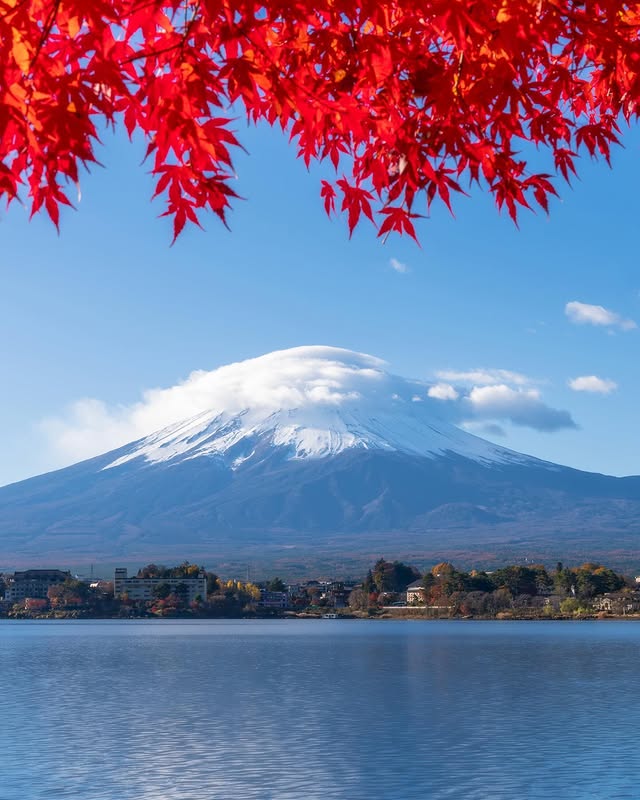
Spring (March to May):
Cherry blossoms in the foreground with Fuji in the back? That’s postcard perfection. Kawaguchiko Lake is especially dreamy in this season.
Summer (July to September):
This is the official climbing season. Trails are open, mountain huts operate, and the weather is mild at higher altitudes. Perfect for those who are up for the challenge of reaching the summit.Autumn (October to November):
The surrounding forests glow with fiery reds, oranges, and yellows. Fuji framed by autumn leaves is a photographer’s delight.
Winter (December to February):
Fuji wears its iconic white snow cap. While climbing is closed, visibility is at its best- crisp, clear skies make winter the top choice for simply viewing the mountain.
How to Reach Mount Fuji
Mount Fuji may look far away in the photos, but getting there is surprisingly easy from Tokyo, Kyoto, or even Osaka. You just have to pick your route depending on whether you want a close-up view (Fuji Five Lakes, Hakone) or to climb it.
From Tokyo
- By Train (Most Popular): Take the JR Chuo Line from Shinjuku Station to Otsuki, then transfer to the Fujikyu Railway to reach Kawaguchiko Station.
- By Bus (Budget-Friendly): Direct highway buses from Shinjuku, Shibuya, or Tokyo Station go straight to Kawaguchiko or Subaru 5th Station. Cheap and convenient!
If you are traveling from Tokyo and thinking how long it takes to get from Tokyo to Mount Fuji? The answer is 2 to 2.5 hours by bus or train from Tokyo to Mount Fuji.
From Kyoto
- Shinkansen Route: Take the Tokaido Shinkansen to Mishima Station (about 2 hours), then transfer to a bus heading towards Fuji Five Lakes.
- Total travel time: Around 3.5 to 4 hours.
Note: If you are planning a day trip to Mount Fuji from Kyoto, it’s good, but remember it’s going to be a very long day. It’s better to stay overnight near Fuji.
From Osaka
- Shinkansen to Mishima or Shin-Fuji: Hop on the Tokaido Shinkansen from Shin-Osaka to Mishima (about 3 hours), then take a bus to Kawaguchiko.
- Expect about 4 to 5 hours total.
The easiest way to reach Mount Fuji is by bus or train from Tokyo in about 2 to 2.5 hours. From Kyoto and Osaka, take the Tokaido Shinkansen to Mishima or Shin-Fuji, then transfer by bus.
Best Viewing Spots of Mount Fuji
Mount Fuji appears differently depending on your vantage point. Sometimes it appears calm by a lake, and other times it looks striking from a pagoda or the coast.
The best places to see Mount Fuji are Lake Kawaguchi (Fuji Five Lakes), Chureito Pagoda, Hakone’s Lake Ashi, and the Shizuoka Coast. On clear days, you can also spot it from Tokyo Skytree or a Shinkansen ride.
Fuji Five Lakes (Fujigoko)
To answer the question, where is the best place to view Mount Fuji? Lake Kawaguchi, located in the Fuji Five Lakes region, is often regarded as the best place to view Mount Fuji.
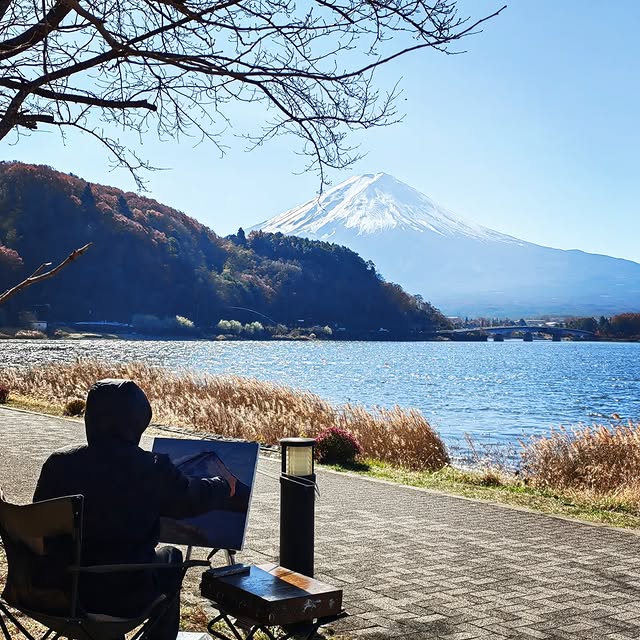
The closest and most iconic views of Fuji. Lake Kawaguchi is the star, especially with cherry blossoms in spring or autumn leaves in November. Great for photography and boat rides.
Chureito Pagoda (Arakura Sengen Shrine)
This five-storey red pagoda with Mount Fuji rising in the background is the shot you’ve probably seen on postcards- that’s the Chureito Pagoda. It is best in spring (cherry blossoms) and autumn (red leaves).
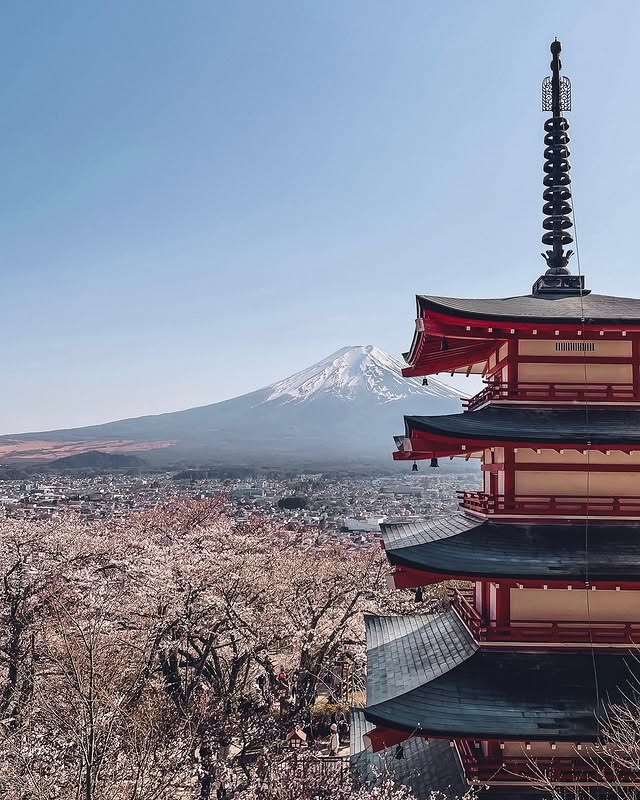
Hakone
A hot spring town where you can spot Fuji across Lake Ashi, sometimes with pirate-style cruise boats sailing by! Perfect if you want spa relaxation + views.
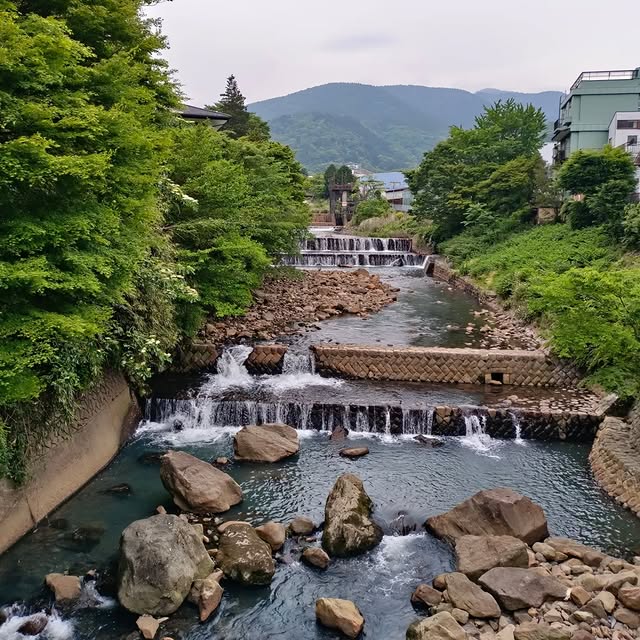
Shizuoka Coast
See Fuji rising above the ocean. The Miho no Matsubara pine grove is a UNESCO World Heritage site, providing incredible seaside views.
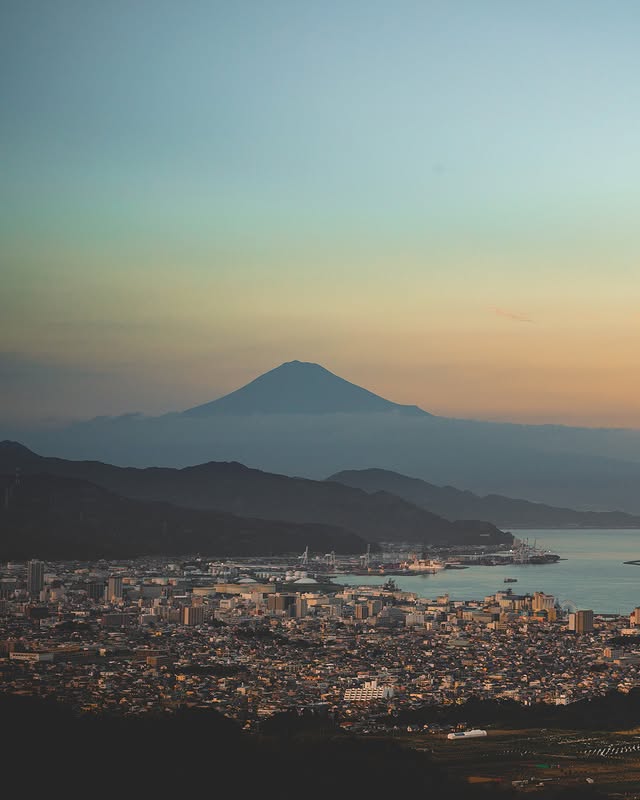
Tokyo Skytree & Shinkansen Window
Yes, you can even catch Fuji from Tokyo on clear days, especially from the Skytree observation deck or out your Shinkansen window as you zoom past.
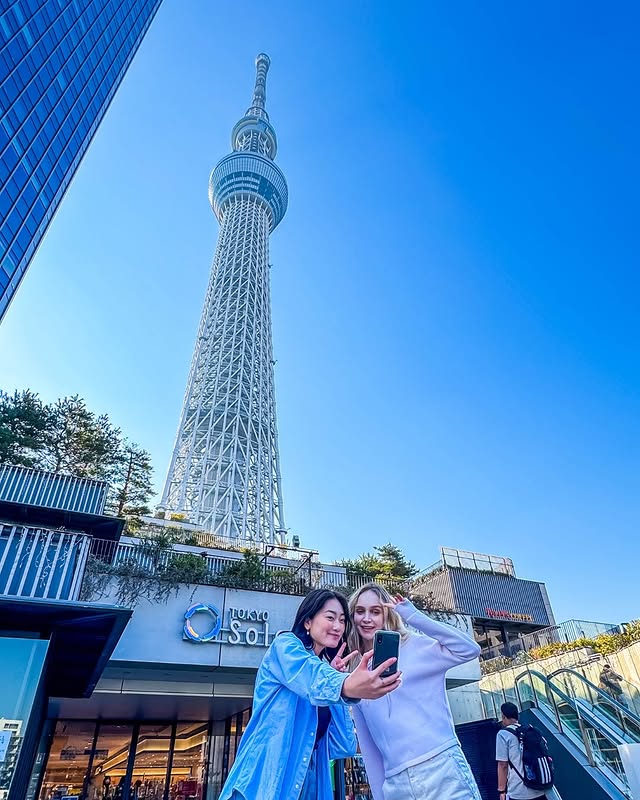
So, these were the best viewing spots near Mt. Fuji. Choose your spot and start planning.
Climbing Mount Fuji (Trails, Tips & Season)
Climbing Mount Fuji is on many travellers’ bucket lists- and for good reason! Standing at 3,776 metres, it’s Japan’s tallest peak and surprisingly doable for beginners if you’re prepared.
Best Season to Climb
The best time to climb Mount Fuji is in August. During this time,
- Trails are open and safe.
- Mountain huts are available for overnight stays.
- The weather is relatively mild (but still chilly at the summit!).
Yoshida Trail (Most Popular)
- Starts from Subaru 5th Station.
- Excellent facilities, numerous huts, and popular with first-time visitors.
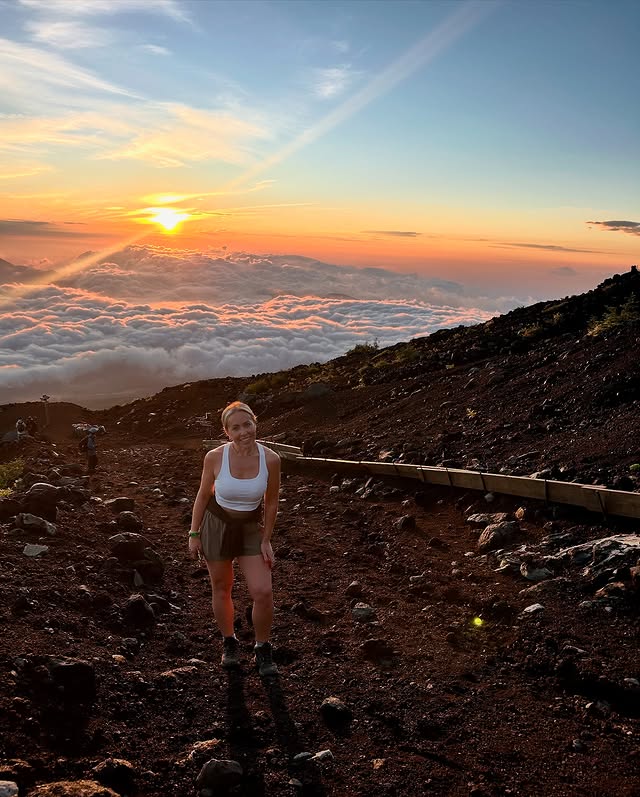
Fujinomiya Trail (Shortest Route)
- Starts at a higher altitude, so it’s the quickest way up.
- It can get crowded in peak season.
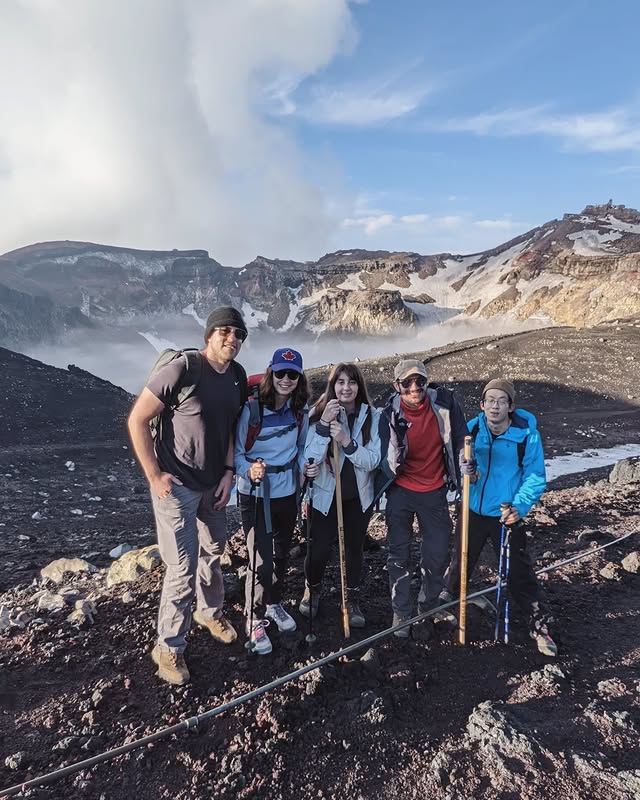
Subashiri Trail (Quieter Choice)
- Less crowded, beautiful forest path in the beginning.
- Merges with Yoshida Trail near the summit.
Gotemba Trail (Challenging)
- Longest and toughest route.
- Few facilities are suited for experienced hikers.
If you are thinking out of these, which trail is best for climbing Mount Fuji? The Yoshida Trail is the best for beginners due to its facilities, huts, and accessibility from Tokyo.
Climb Duration
- Ascent: 5 to 8 hours, depending on the trail.
- Descent: 3 to 5 hours.
| Do you know?
Most climbers start in the afternoon, rest overnight at a hut, and reach the summit for sunrise- a magical moment called “Goraiko.” |
Note: On average, it takes 8 to 12 hours round-trip to climb Mount Fuji, including rest stops.
Tips Zone for First-Time Climbers
|
Fun Things to Do Around Mount Fuji (Beyond Climbing)
There are many activities to enjoy around Mount Fuji. Visitors can relax in hot springs with stunning mountain views. Thrill-seekers can ride roller coasters at Fuji-Q Highland. The Fuji Sengen Shrines offer a glimpse into local culture and spirituality. A cruise on Lake Kawaguchi provides beautiful scenery, and don’t forget to sample local dishes like Houtou Noodles.
Relax in an Onsen with Fuji Views:
Imagine gazing out at the beautiful view of Mount Fuji while bathing in a hot spring. The Fuji Kawaguchiko Onsen area has ryokans (traditional inns) where you can enjoy steaming baths and epic mountain views.
Note: The best onsen with views of Mount Fuji are located around Lake Kawaguchi and the Hakone region.
Fuji-Q Highland:
If you love thrills, this theme park near Fuji is a must. It features world-record-breaking roller coasters, anime-themed attractions, and, yes, a lovely Fuji backdrop.
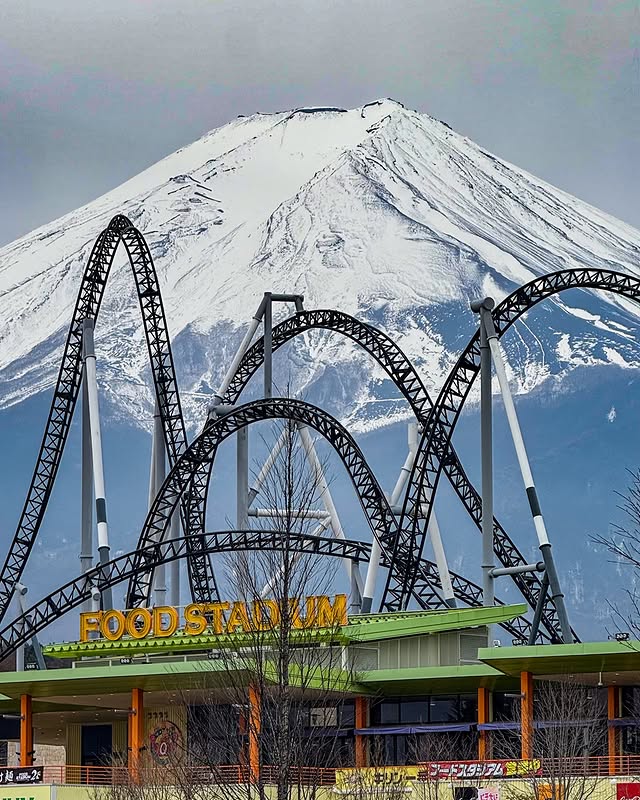
Visit Fuji Sengen Shrines:
These ancient shrines honor the goddess of Mount Fuji. The Fujisan Hongu Sengen Taisha Shrine in Fujinomiya is especially important as it was historically the starting point for pilgrimages up Mount Fuji.
Cruise on Lake Kawaguchi:
A relaxing boat ride on Lake Kawaguchi gives you postcard-perfect Fuji views, especially at sunrise and sunset.
Try Local Specialities:
Fuji’s region is famous for Houtou Noodles (a hearty miso-based noodle soup, perfect after hiking) and fresh wasabi grown in nearby farms.
Explore Caves & Forests:
The Aokigahara Forest (Sea of Trees) near Fuji is mysterious but fascinating, with lava-formed caves like Fugaku Wind Cave and Narusawa Ice Cave, where you can walk.
Travel Tips for Visiting Mount Fuji
| Getting There: |
|
| Best Time to Visit: | For climbing, July–September. For views, winter (Dec–Feb) offers the clearest skies, while spring and autumn bring blossoms and colourful leaves. |
| Where to Stay: |
|
| Costs: | Bus 1200 INR, train 1800 INR, onsen 1000 INR, mountain hut stay 3000 INR+ |
| Quick Tips: |
|
Conclusion
Whether you’re gazing at Mt. Fuji from the peaceful shores of Lake Kawaguchi, relaxing in an onsen in Hakone, or challenging yourself to climb to the summit, Mount Fuji is going to be a memorable experience. Its beauty shifts with the seasons, offering something new every time you visit.
So, if you’re planning a trip to Japan, make sure Fuji is at the top of your itinerary. Trust me- seeing that perfect snow-capped peak in person is one of those “wow” travel moments you’ll never forget.
So, are you ready to experience Japan’s most iconic landmark? Start planning your Mount Fuji adventure today! In case of any help, contact us, and we will make it easy for you.
Frequently Asked Questions About Visiting Mount Fuji
How do I get to Mount Fuji from Tokyo?
The easiest way is by direct bus from Shinjuku to Kawaguchiko Station, which takes about 2 hours. Trains via Otsuki take around 2.5 hours.
When is the best time to visit Mount Fuji?
For climbing, go between July and September. For clear views, winter (December- February) is best.
Can you see Mount Fuji from Tokyo?
Yes, on clear days, you can spot Mount Fuji from places like Tokyo Skytree, Roppongi Hills, or even the Shinkansen ride.
How much does it cost to climb Mount Fuji?
Expect to spend around ¥5,000 (₹2,980 INR)- ¥8,000 (₹4,770 INR) for a hut stay, plus transport and food. Entry to the trails is free, but there’s a ¥1,000 (₹600 INR) voluntary donation.
How many days do you need at Mount Fuji?
A day trip is enough for views, but stay 1- 2 nights in Kawaguchiko or Hakone if you want to explore lakes, onsens, or climb the mountain.